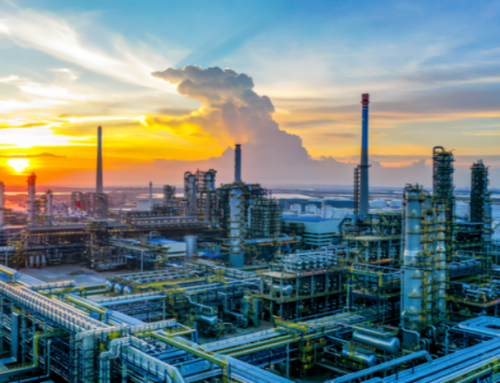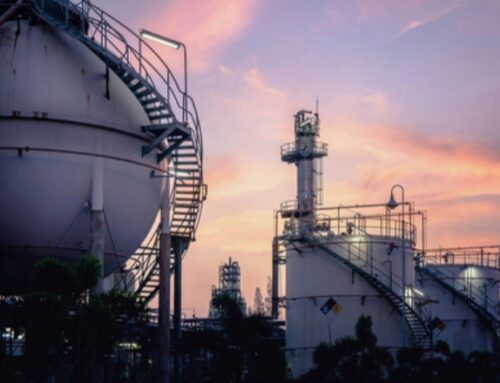China’s photovoltaic industry started early, high degree of development, many links in the industrial chain have a high proportion of capacity, has become the global photovoltaic industry development promoter and leader, especially after the photovoltaic film industry reshuffle, foreign enterprises have basically withdrawn from the market, according to the Foster annual report data, photovoltaic film production costs, about 90% of the direct raw material costs.
EVA/POE as the core raw material of photovoltaic film, the degree of localization is low. By 2021, China’s EVA production capacity totaled 1.772 million tons, accounting for 27% of the world’s; POE/POP global production capacity of more than 1 million tons, due to polymerization process, metallocene catalyst, A-olefin and other links there are high technical barriers, POE production capacity is mainly concentrated in the hands of Dow, Mitsui, LG and other companies, China has not yet achieved POE large-scale industrial applications.
At present, there are mainly four kinds of photovoltaic film on the market: transparent EVA film, white EVA film, POE film, and co-extruded EPE film. Transparent EVA film has become the mainstream packaging material in the current market due to its price advantages and processing performance advantages, accounting for about 52%; White film EVA is to add a certain amount of white fillers such as titanium dioxide in EVA resin to improve the reflectivity of the secondary light, mainly used for the back package of single glass and double glass components, the use of white EVA instead of transparent EVA, double glass component power gain up to 7-10W, single glass component power gain 1-3W.
POE film is the main packaging material for double glass components because of its unique anti-PID performance, high resistivity and easy hydrolysis. The EPE film is made of EVA and POE resin by co-extrusion process, which has both good processing performance of EVA and good PID resistance and water vapor resistance of POE. According to CPIA’s forecast, in the next few years, the market share of transparent EVA and white EVA film will decline, and the market share of EPE film will increase significantly.


EVA resin still needs to be imported in the short term.
The industrial production of EVA resin mostly adopts the high-pressure continuous bulk polymerization process, and its polymerization mechanism and production process are basically the same as LDPE (low density polyethylene, mainly made of thin film products). The lower the VA content, the closer the nature of EVA to LDPE, with relatively good wear resistance and electrical insulation, can be used to produce agricultural film, foamed footwear, packaging materials and other low-end products. The higher the VA content, the closer the nature of EVA to rubber, with relatively good elasticity and transparency, can be used for photovoltaic film, coating materials and other high-end products. Among them, the VA content of EVA resin used for photovoltaic film needs to be controlled between 28% and 33%, which is difficult to produce and has a high market value.
From 2017 to 2020, the total production capacity of domestic EVA resin is stable at 972,000 tons, but only three enterprises, Sierbon Petrochemical, Lianhong Xinke and Ningbo Formosa Plastics, have the production capacity of photovoltaic materials, and the total production capacity is only about 300,000 tons, and the import dependence has been maintained at more than 60%. In recent years, affected by the leapfrog development of the downstream photovoltaic industry, refining and chemical enterprises have introduced technical process packages (mainly Lyondellbasell tube method), hoping to avoid the Red Sea competition of general-purpose polyethylene by converting to EVA. In the second half of 2021, Sinochem Quanzhou, Zhejiang Petrochemical, Yanchang Yulin Chemical and other enterprises have successfully produced photovoltaic materials.
By the end of 2022, the total production capacity of domestic EVA resin has increased to 2.15 million tons, and the number of enterprises that can steadily produce photovoltaic materials has increased to 9, with a total photovoltaic material capacity of 980,000 tons. According to Zhuochuang information statistics, the output of EVA resin in 2022 totaled 1.676 million tons, of which the cumulative output of photovoltaic materials reached 837,000 tons, and the annual output of photovoltaic materials reached 50%. Combined with the estimated demand for PV grade EVA resin in Table 3, the import dependence has been reduced to about 26%, and the supply capacity of domestic PV materials has been significantly improved.
Looking forward to 2023, although EVA new production capacity is expected to reach 550,000 tons, but the new supply of photovoltaic materials is more limited, incremental demand can only be met through overseas supply, is expected to 2023 import dependence will rise again. This is due to the long ramp period of EVA resin production capacity, and the actual production capacity of photovoltaic materials also has great uncertainty.
From the experience of the industry, it takes at least one year for the new device to successfully supply photovoltaic materials in batches. First of all, the device needs to produce LDPE steadily for more than half a year before it can be converted to EVA. Secondly, the production of EVA also needs to start from the foam material with low VA content, and accumulate enough experience in the operation of the device to gradually convert to more difficult photovoltaic materials. Finally, it takes about 4 months for the product to be delivered to the manufacturer for verification and import into use.
Therefore, even Tianli High-tech, which achieved commissioning in the third quarter of last year, has great difficulty in achieving stable shipments of photovoltaic materials in 2023. Taking into account the capacity climb and verification cycle, it is expected that most of the new capacity will not be effectively supplied until 2025. Due to the existence of the upper limit of the capacity of the photovoltaic material of the device (the tubular method is generally about 80%, because the photovoltaic material VA content is high and the viscosity is strong, the equipment needs to be regularly maintained and cleaned), even if the optimistic assumption is that all manufacturers can successfully complete the verification and maximize the output of photovoltaic materials, it is difficult to meet the supply gap caused by the rapid growth of component shipments in the next two years. Therefore, it is expected that by 2025, the high probability will maintain the state of short supply.
Article from M&J International Trading Co., Ltd





